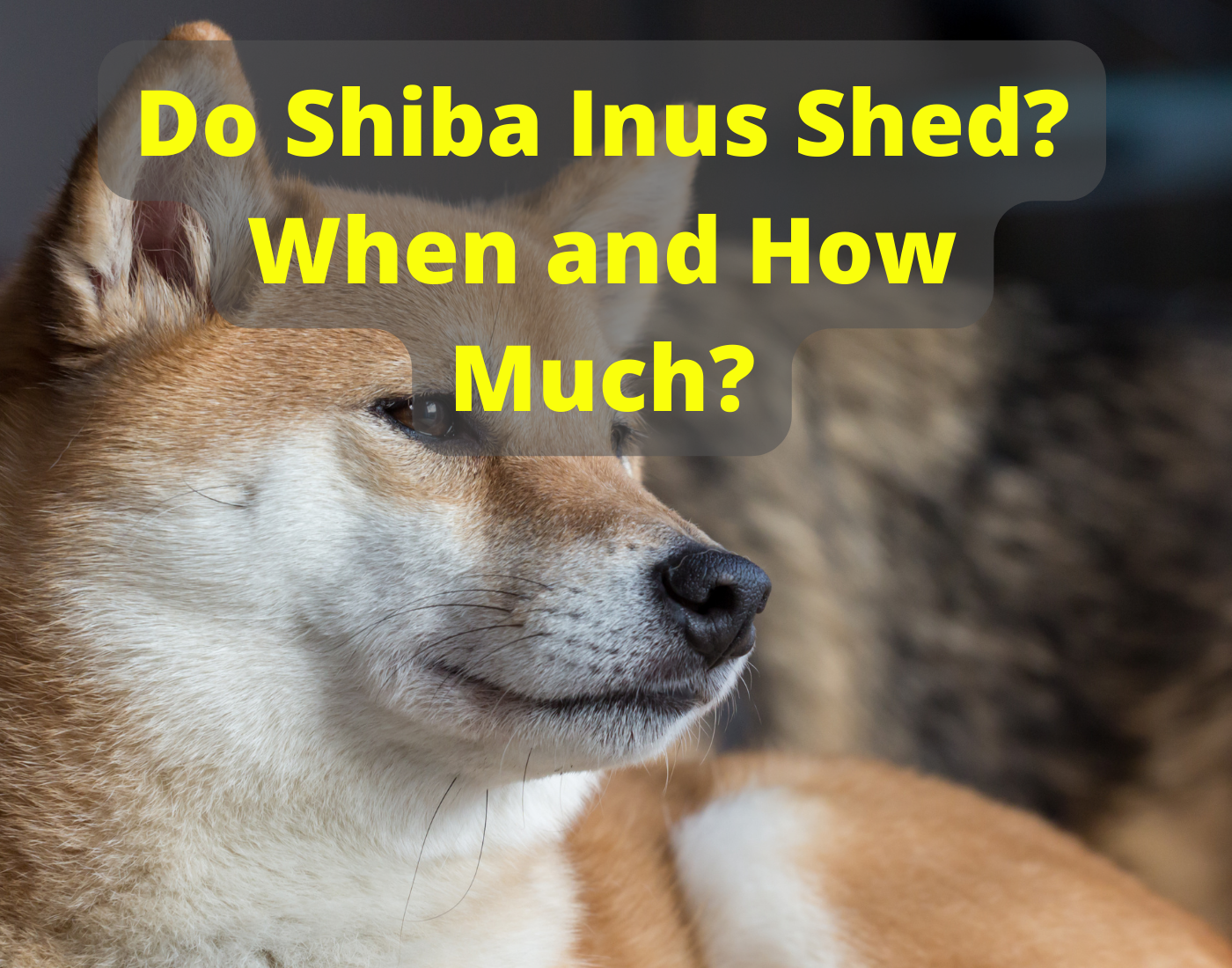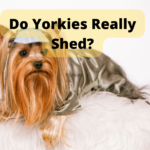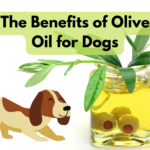
Shiba Inu is an ancient Japanese, well-muscular, almost fox-like breed once employed as a hunter. Over the centuries, the purebred canine breed has become more docile and sociable, but it still has a reputation as a high-spirit, alert-face companion dog. Despite its smooth stride and good nature, the dog has a solid, confident personality. It’s bold but not mean. And, yes they shed! But how much and when, let’s know in this well reaserched guide on Shiba Inu’s Shedding.
Contents
Know Shiba Inu Coats and Colors To Understand Shedding
A Shiba Inu’s coat is the most noticeable thing on the breed. The Shiba Inu breed comes in three distinct, standard color variations (although some less common color forms also exist):
Red Shiba Inu
The red Shiba Inu is the most desired, most prevalent coat color, accounting for almost 70% of all Shiba Inus. This type of coat consists of a ventral fox red color melding with creamy-white markings, called urajiro, on the anterior parts of the dog.
Black and Tan Shiba
The black and tan Shiba has a rusty black coat with tans on some anterior parts.
Sesame Shiba
Sesame Shiba has vibrant red base hairs with black or sesame colored hair evenly distributed throughout the chest, back, and head. The sesame Shiba is probably the most beautiful coat on the face of the earth, almost to the point of mesmerizing the observer.
Hence, Shiba Inus are double-coated dogs with an outer stiff, straight coat and a plush, thick undercoat.
It’s normal for a double-coated breed to shed its hair all year round. However, twice a year, especially at the onset of spring and fall, the shedding becomes heavy, and is known as coat blowing or blowing coat.
Shiba Inu outer coat
The outer coat of Shiba Inus has vibrantly colored, stiff, and straight hair. The coat is often termed as guard hair.
They stand a bit off the body, are short, even, and full on the face and legs, and are longer on the tail and stand up a bit over it.
Shiba Inu Undercoat
The undercoat of Shiba Inus is thick, soft, and plush. Based on the breed type, Shiba Inus can have light-colored, grayish-brown, or black undercoats.
What purpose does a double coat serve?
The Shiba Inu undercoat aims to protect the animal from harsh weather and climate conditions. For example, the undercoat insulates the animal against heat in the summer and cold winter.
The outer coat renders some protection against germs and pesky insects. It also protects the animal’s skin from sunburn, not to mention the aesthetic effect this beautiful coat layer generates on your canine friend.
You see that the Shiba Inu’s coat insulates the dog from potential environmental hazards and gives the breed its characteristic, aesthetically pleasing looks. Because of this, you should never shave your Shiba Inu coat unless it becomes crucial for the dog’s wellbeing.
Shiba Inu Shedding Level: When do Shiba Inus Shed?
Most Shiba Inu owners describe their dog’s shedding as “moderate to extreme.” However, excessive shedding happens when Shiba Inus blow their undercoat during the first 2-3 weeks of spring and autumn.
In some cases, shedding continues for 2-3 months, making it more problematic for the Shiba Inu owner. For the rest of the year, that is about 46 weeks of the year out of a total of 52, the breed doesn’t shed much, provided care for and grooming is enough for your canine companion’s double coat.
Why do Shiba Inus Shed So much?
Shedding in the Shiba Inu is a natural process guided by seasonal changes in the short run and evolution in the long run. The process is self-explanatory in a sense, as is evident by the fact that the breed sheds at the onset of spring and fall—that they have to prepare for the upcoming environmental, weather, and climate conditions.
Another perspective is that the coat blowing replaces the older, worn-out Shiba Inu’s fur and hairs with the juvenile, healthier ones.
Whatever the reason, all the dogs shed as a seasonal biological. All canine breeds shed heavily twice a year; however, shedding is worse for a double-coated breed like Shiba Inu.
Factors that Affect the Shiba Inu’s Shedding Levels
In addition to seasonal changes, many other factors can impact your Shiba Inu’s shedding. Some of these factors are part and parcel of a Shiba Inu’s life, and there’s nothing to worry about.
You can make slight adjustments to counteract these elements in your dog’s life. For example, you can introduce some changes into your Shiba Inu’s daily routine to match their circadian rhythms. While the following items influence Shiba Inu’s shedding, the impact never reaches the threshold.
Estrus
Non-primate animals, including Shiba Inus, go through a recurring “heat cycle,” a period of sexual receptivity and fertility. When estrus is going on, estrogen levels increase in your dog’s blood.
Estrogen and progesterone (a hormone supporting pregnancy) decrease in the animal’s blood after the cycle. In addition to serving other biological and existential purposes, these two hormones also promote hair growth.
When estrogen and progesterone levels drop after estrus, your Shiba Inu’s hair grows slowly and thinly. Even more so as the concentration of these hormones drops, androgen levels begin to rise. Androgens are a group of hormones that, besides playing an important role in procreation, cause hair follicles to shrink, sometimes leading to alopecia.
Long story short, following the estrus cycle, your Shiba Inu’s estrogen and progesterone levels drop, causing the dog to lose hair much more rapidly. That’s something you can expect without worrying too much unless it turns out to be excessive shedding.
Age
In the first few months of a Shiba Inu puppy, it doesn’t have much hair to shed—little to no shedding indeed. Most dog breeds lose puppy coats between 4-6 months of age. However, in the case of Shiba Inus, you should expect your puppy to lose its coat around the end of its first year or the beginning of the second year of its age.
Shiba Inus blow off their coats profusely between their prime years of 3-7. However, this is normal shedding, and you shouldn’t be concerned until they have a disease.
Shiba Inus live for approximately 12-15 years, and you should expect more shedding during the later years of their being alive. As they grow old, their skin, roots, and fur become weaker and less healthy—resulting in more shedding and breaking off. However, you’ll note that shedding is becoming more and more irregular—hair falling out in small patches.
Environment
Shiba Inus are mountainous dogs and thrive well in cold weather. They’re an excellent match for the inhabitants of cold climate regions. On the other hand, living in a tropical area means more day length and plenty of sunshine.
A good dose of sunlight daily prevents hair loss and promotes hair follicle growth. If your Shiba Inu inhabits a tropical region, it implies profuse and healthy hair growth and, in turn, more shedding. However, that’s not something to be concerned about—you have to do a bit more cleanup and grooming.
If you live in a congested apartment or condo and your dog doesn’t receive much of the daylight, its hair follicles will lose most of their strength, and the coat, as a result, will continue shedding.
Similarly, the hot climate also promotes Shiba Inu’s hair growth by acting as a catalyst to accelerate metabolism. Shiba Inus aren’t accustomed to tropical or subtropical temperatures that fall between 75 and 82 degrees Fahrenheit. They may experience abundant shedding due to a high metabolism if they live in such an environment.
What Causes Shiba Inu Shedding Excessively?
Abnormal coat shedding usually points towards an underlying health condition. The condition can be mild to severe, based on the severity of the symptoms. The following are some of the notorious causes that can lead to alopecia (hair loss).
Skin Diseases
Abnormal hair loss in Shiba Inus mainly occurs due to skin diseases, whether innate or germ-borne.
Viral infections, too, can lead to bald spots in the affected areas. Here is a detailed account of skin diseases that can produce hair loss in the Shiba Inu.
Flea Allergy Dermatitis
F.A.D. or flea allergy dermatitis is one of the most prevalent and annoying health issues Shiba Inu faces. Shiba Inus are usually allergic to flea bites and will scratch relentlessly to relieve the discomfort. Excessive scratching after a flea bite can cause locally induced hair loss.
If your Shiba Inu is suffering from F.A.D., you should immediately take him to a qualified veterinarian.
Acute Moist Dermatitis or Hot Spots
Acute moist dermatitis, pyotraumatic dermatitis, or hot spots is a skin condition characterized by localized, watery, abnormal redness induced by blood accumulation in dilated capillaries. These areas are also referred to as erythematous areas.
Hot spots are a type of self-induced injury caused by excessive licking and sometimes leading to hair loss in the affected area. The condition itself is not contagious or threatening—however, the underlying issue can be dangerous if not properly addressed.
Again, only your veterinarian may correctly diagnose and address the underlying problem.
Seborrhea
Sebaceous glands that are found in the dog’s skin secrete sebum, the oily secretion that balances the skin’s tone and pH and helps it keep germs and other pathogens at bay. Sometimes, the secretion becomes excessive due to diet issues, allergies, parasites, endocrine, and immune disorders, and unknown causes, giving rise to a condition termed seborrhea and characterized by flaky or scaly and oily skin.
Severe seborrhea leads to clogged pores causing an unpleasant odor. The condition can also lead to hair loss due to unmanaged dandruff.
Idiopathic seborrhea in dogs is especially dangerous for your Shiba Inu’s coat. Since the exact cause of the disorder remains unknown, you can’t treat it. However, you can manage the condition with diet and supplements.
Self-medicating your Shiba Inu isn’t advised. Consult your vet for accurate diagnosis and treatment.
Mange
Mange is a highly contagious disease induced by exposure to parasitic mites and is highly likely to be transmitted to humans. Mange causes severe itching, hair loss, and the formation of scabs (or lesions).
The treatment can take as long as months and includes regular scabicidal dips and oral medication.
Folliculitis
Inflammation of the hair follicles is referred to as folliculitis and, sometimes, bacterial folliculitis. The condition occurs due to bacteria but can also be caused by other parasitic infestations, hormonal imbalances, fungi attacks, systemic diseases, and other skin diseases.
The condition develops when bacteria commonly found on your dog’s skin enter hair follicles, causing infection. Redness, itchiness, hair loss, color change, and pain typically and categorically follow the disease.
The condition is thought to be the most common skin disease in canines, and Shiba Inu’s, like other dog breeds, are susceptible to it.
Ringworm
Ringworms are also typically termed “athlete’s feet,” but they’re not limited to humans. It’s a highly contagious disease characterized by circular areas of hair loss, localized inflammation, and scabs. However, the condition is not seriously acute and can be treated with a combination of orally administered medication and topical application.
Innate Alopecia
Innate alopecia can be due to various reasons. For example, hypothyroidism and hyperthyroidism both can cause your Shiba Inu’s hair to fall out. The thyroid is an essential metabolic hormone that controls hair follicle growth. When the balance is disturbed, increased or decreased thyroid levels in your dog’s body can lead to hair loss from the dog’s coat.
Malnutrition
Shiba Inus are primarily carnivores and need essential minerals and amino acids to assimilate into their bodies. A proper diet is necessary for them to survive and thrive. When fed an unhealthy diet, their follicles will weaken, and their hair will fall off.
If your Shiba Inu is suffering from malnutrition, you should immediately implement a healthy diet full of minerals and proteins required. Maintain the Veteranian advised diet until your dog recovers.
Supplements can help for a rapid recovery. But don’t medicate your dog yourself and seek a professional’s help to decide on a supplement that matches your dog’s needs.
Salt & Dehydration
Pets munching on too many salty foods for a long time develop a dire thirst and—if they don’t receive plenty of water—can even undergo dehydration. When your Shiba Inu’s follicles run out of moisture, their hair becomes brittle and gradually falls off.
Stress
Stress can have adverse side effects on your Shiba Inu, including hair loss. They’re part of the most loving and caring genus on the face of the earth, and they appreciate every bit of attention from their owners. They’re not attention seekers but may fall sick when they don’t get the care they deserve from their parents.
Shifting and losing someone, among others, are some of the most stressful events for dogs.
Allergies
Contrary to popular belief, Shiba Inus are also susceptible to specific allergens, including perfumes, feathers, cigarette smoke, grass, pollen, dust, and food allergens. If you don’t remove the allergy source from your dog’s vicinity or diet, it may experience bad health effects, including hair fall.
You may want your Shiba Inu to take an allergy test to determine what he’s allergic to. Treatment may include prevention, medication, or both based on allergy type. Either way, you should seek your veterinarian’s help.
How to Manage Shiba Inu Shedding?
If a medical diagnosis precedes treatment, prevention precedes medication. For this reason, you should always try to keep your Shiba Inu at bay from hair agents or factors causing hair loss.
If you fail, or—despite precautions—your dog starts shedding out of the blue, you should always seek a professional’s help for a correct diagnosis. In case, the problem is not serious and there’s no underlying health condition, employ the following methods to manage your Shiba Inu’s shedding.
Shiba Inu Grooming Can Help Stop Dog Hair Shedding
Regular brushing is one of the best ways to keep your Shiba Inu’s shedding at a minimum. In ordinary circumstances, brushing your Shiba Inu twice a month suffices to meet your dog’s needs. Change the brushing frequency to once or twice a week during shedding season.
Various types of brushes are available on the market. However, a deshedding brush with roundedges is all you need for your Shiba Inu pet. The round edges mean there will be no scrapes or scratches on your dog’s sensitive skin. Furthermore, the metallic fingers of the brush will reach deep down the undercoat and rake out the loose fur.
A good brush with soft bristles and a comb are advised for grooming.
First of all, you should loosen up your Shiba Inu fur using a soft brush. Then, pick up your deshedder to remove any detached, stray hair within the coat. Lastly, comb your dog’s coat to remove any leftover hair.
Final Thoughts on Shiba Shedding
Shiba Dogs tend to loose hair just like other dog breeds. Yet being sensitive to diseases, they shed excessively, other than seasonal shedding. If you’re looking for a hypoallergenic dog, they’re not for you.
doglover.biz is a participant in the Amazon Associate program and will earn from qualifying purchases.


